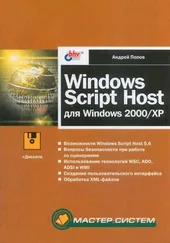Chris Cant - Writing Windows WDM Device Drivers
Здесь есть возможность читать онлайн «Chris Cant - Writing Windows WDM Device Drivers» весь текст электронной книги совершенно бесплатно (целиком полную версию без сокращений). В некоторых случаях можно слушать аудио, скачать через торрент в формате fb2 и присутствует краткое содержание. Город: Lawrence, Kansas 66046, ISBN: , Издательство: R & D Books, Жанр: Программирование, на английском языке. Описание произведения, (предисловие) а так же отзывы посетителей доступны на портале библиотеки ЛибКат.
- Название:Writing Windows WDM Device Drivers
- Автор:
- Издательство:R & D Books
- Жанр:
- Год:неизвестен
- Город:Lawrence, Kansas 66046
- ISBN:0-87930-565-7
- Рейтинг книги:5 / 5. Голосов: 1
-
Избранное:Добавить в избранное
- Отзывы:
-
Ваша оценка:
- 100
- 1
- 2
- 3
- 4
- 5
Writing Windows WDM Device Drivers: краткое содержание, описание и аннотация
Предлагаем к чтению аннотацию, описание, краткое содержание или предисловие (зависит от того, что написал сам автор книги «Writing Windows WDM Device Drivers»). Если вы не нашли необходимую информацию о книге — напишите в комментариях, мы постараемся отыскать её.
Writing Windows WDM Device Drivers — читать онлайн бесплатно полную книгу (весь текст) целиком
Ниже представлен текст книги, разбитый по страницам. Система сохранения места последней прочитанной страницы, позволяет с удобством читать онлайн бесплатно книгу «Writing Windows WDM Device Drivers», без необходимости каждый раз заново искать на чём Вы остановились. Поставьте закладку, и сможете в любой момент перейти на страницу, на которой закончили чтение.
Интервал:
Закладка:
Send an IRP_MN_WAIT_WAKE IRP to yourself using PoRequestPowerIrp before you power down. The bus driver marks the IRP as pending. When the wake event occurs, the bus driver completes the IRP and wakes the system up or powers the device up.
The situation becomes complicated when your bus driver cannot wake up the system. The bus driver FDO must generate another IRP_MN_WAIT_WAKE IRP and send it to its PDO. This continues until the root ACPI driver is reached, which can wake the system up. Each IRP_MN_ WAIT_WAKE IRP is completed in turn by the bus drivers when a wake event is detected.
You must be prepared to cancel an IRP_MN_WAIT_WAKE IRP when a device is removed.
When a device is stopped, the IRP_MN_WAIT_WAKE IRP must be cancelled and sent again when the resources have been reassigned.
A driver can send an IRP_MN_POWER_SEQUENCE IRP to its bus driver (device power policy manager) to see how many times the device has entered the device states D1, D2, and D3. This information is used to see if a device did power down and so needs to be powered up.
A bus driver zeroes these counts when the device is created. It then increments the relevant count every time it moves into that device state. It never zeroes the counts again.
The PoRegisterSystemState kernel call provides a function similar to the SetThreadExecutionState Win32 call. It lets a driver tell the Power Manager that the system is busy, that the display is required, or that a user is present. If successful, PoRegisterSystemState returns a non-NULL pointer. When you are finished, call PoUnregisterSystemState to cancel your busy notification.
The similar function, PoSetSystemState just resets the Power Manager idle counters for these same attributes. Calling PoSetSystemState does not make the settings persist.
These functions are only available in W2000.
A driver can register to receive power notification events on a device tree using the PoRegisterDeviceNotify function. A notification handle is returned that must be passed to PoCancelDeviceNotify to stop receiving power notification events. These functions are only available in W2000.
In Windows 2000, a driver can use a kernel callback object to detect when the system power policy changes or when a sleep or shutdown is imminent. Register a callback routine to receive notification of \Callback\PowerState events.
First, initialise an attribute block using InitializeObjectAttributes . Then obtain a callback object pointer using ExCreateCallback . Finally, register your callback routine using ExRegisterCallback . The arguments passed to your callback routine indicate what power event has happened — see the DDK for details. Call ExUnregisterCallback when you do not wish to receive any more notifications.
You can also register to receive \Callback\SetSystemTime notifications when the system time is changed. Finally, you can create your own callback object; calling ExNotifyCallback runs the callback routines in all the other drivers that have registered for your callback.
Chapter 12 shows that Windows Management Instrumentation (WMI) is a facility that lets users interact with drivers. In fact, it will be just system operators, developers, or network professionals who wish to use WMI to see what is happening in a system, possibly to diagnose a fault condition.
A driver supports WMI by handling the IRP_MJ_SYSTEM_CONTROL IRP. WMI lets drivers make information available to users or receive data from them. The data objects are in structures identified by GUIDs. There are various standard WMI data blocks, but drivers can define their own data blocks, if need be.
The Power Management portion of a driver can use two standard WMI data blocks to let a user enable or disable two features. The MSPower_DeviceEnable data block, identified by GUID_POWER_DEVICE_ENABLE, has an Enable Boolean that a driver should use to determine if it should dynamically power itself down when it is idle. The MSPower_DeviceWakeEnable data block, identified by GUID_POWER_DEVICE_WAKE_ENABLE, has a similar Enable Boolean whose value should be used to enable its Wake feature.
A driver that supports these WMI features may also let their settings be changed using IOCTLs.
GUID_POWER_DEVICE_TIMEOUT is also defined to let the user change the idle timeouts. This feature is not working in W2000 Beta 3.
If you implement WMI for the MSPower_DeviceEnable or MSPower_DeviceWakeEnable data blocks, the driver properties box gains an extra Power Management tab. Figure 10.4 shows how this looks for a Wdm3 device. The Wdm3 driver supports the MSPower_DeviceEnable data block, but not MSPower_DeviceWakeEnable , so only the power down option is available in the Power Management tab.
Figure 10.4 Wdm3 Power Management device properties
Conclusion
This chapter has shown how to handle the various aspects of WDM Power Management. The Wdm2 driver provides a practical illustration of these techniques. The Wdm2Power user mode application can be used to suspend or hibernate a computer.
The next chapter shows how INF files are used to install WDM device drivers.
Chapter 11
Installation
This chapter looks at how to install WDM drivers using installation INF files and describes the process of finding INF files using Hardware and Compatible IDs. The chapter then looks at how to install NT style (non-WDM) drivers. Example Win32 installation code is listed.
WDM Driver Installation Process
A WDM driver is installed if a new device is detected by a bus driver, or if you install a device using the Add New Hardware wizard in the Control Panel. A later section describes how the right driver is found. In both cases, the Plug and Play (PnP) Manager adds entries for the device and its driver to its configuration tables in the registry.
A driver is installed by following the instructions in an INF file. The driver executable is copied to the right location, usually the Windows System32\Drivers directory. Then various registry entries have to be made.
Some devices may now need to have some system resources assigned to them, such as I/O Port addresses and interrupt numbers. The PnP Manager may need to juggle the resources that have been assigned to existing devices to make the desired resources available to the new device. If necessary, existing devices are stopped (if they agree) and their resources reassigned.
If the driver is not already present, it is loaded and its DriverEntry routine is called. The driver AddDevice routine is called for the new device. Various Plug and Play IRPs are then sent to the device as detailed in Chapter 9. This process culminates when the Start Device PnP IRP is sent to tell a driver which resources it has been assigned. The driver uses these resource assignments to start its device. Normal I/O requests can then proceed.
The INF file that was used is copied to the Windows INF subdirectory. In Windows 98, they are put in the INF\OTHER subdirectory, with the INF filename changed to include the Manufacturer name. In Windows 2000, the INF file is copied to the next available OEM*.INF filename in the INF directory (e.g., OEM4.INF). If you reinstall a driver with the Have Disk option, the new INF file is copied to a new OEM*. INF file. It is probably best if you delete any out-of-date OEM*.INF files.
Please note three important points about installation.
Читать дальшеИнтервал:
Закладка:
Похожие книги на «Writing Windows WDM Device Drivers»
Представляем Вашему вниманию похожие книги на «Writing Windows WDM Device Drivers» списком для выбора. Мы отобрали схожую по названию и смыслу литературу в надежде предоставить читателям больше вариантов отыскать новые, интересные, ещё непрочитанные произведения.
Обсуждение, отзывы о книге «Writing Windows WDM Device Drivers» и просто собственные мнения читателей. Оставьте ваши комментарии, напишите, что Вы думаете о произведении, его смысле или главных героях. Укажите что конкретно понравилось, а что нет, и почему Вы так считаете.






